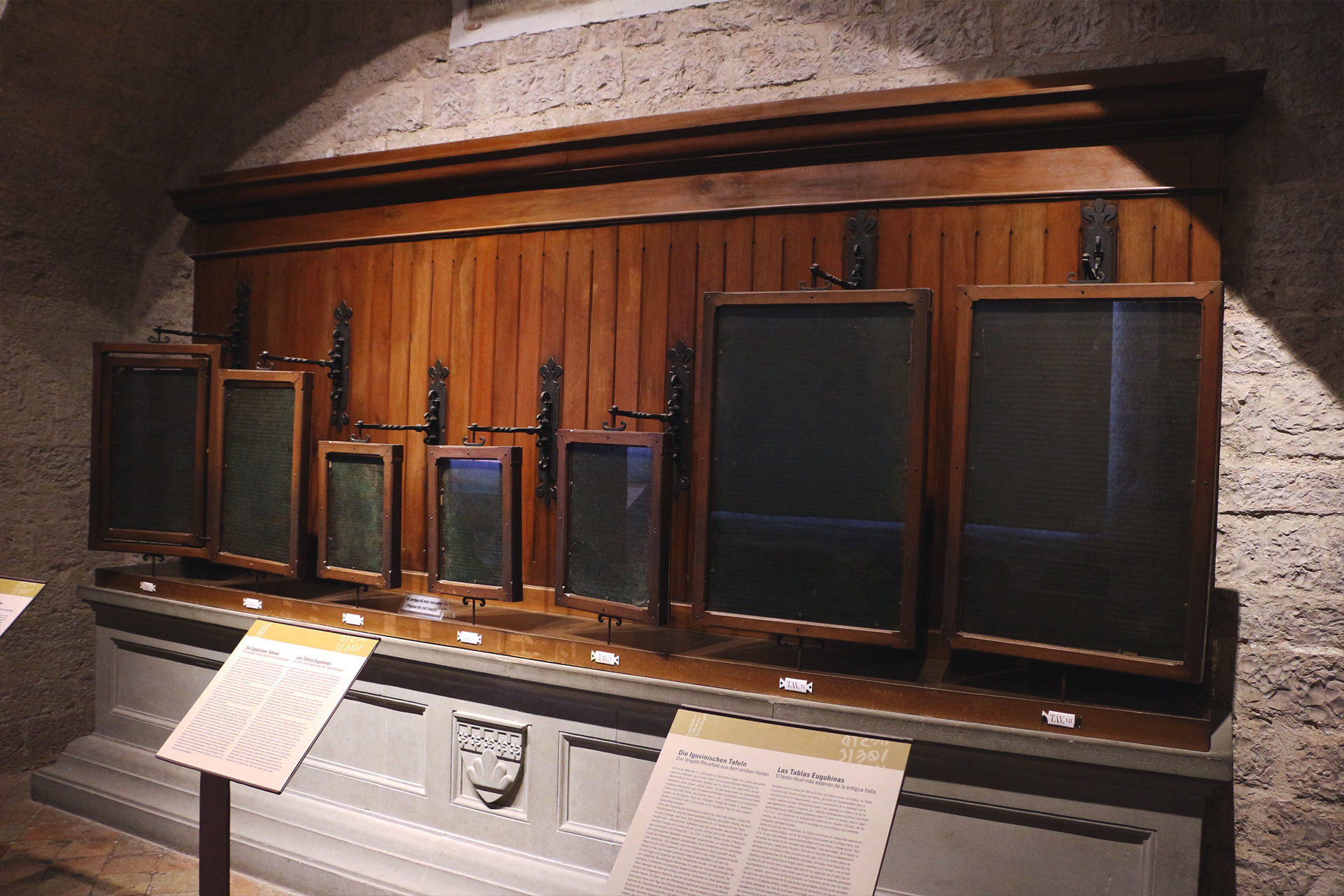The fascinating and complex history of the Ancient Umbrians who arrived in the peninsula 2000 years B.C. and then occupied a vast area of central Italy.
This population, before being Romanised around the 1st century A.C., provided a crucial contribution to the birth of the Italic culture and to what would become Western civilisation.
Plenty and important information on the traditions of the Ancient Umbrians is provided in the Eugubian Tablets or Iguvine Tablets, today on display at the Museo Civico di Gubbio, in the Palazzo dei Consoli .
These are seven bronze tablets engraved between the 3rd and 1st century B.C. with text dating back even earlier.
Their historical value is provided by numerous factors, which obviously include the fundamental testament they represent in relation to the Umbrian population at that time, but also by the fact that they are the most significant texts of the Umbrian language – with very few being known to date – and, lastly, the fact that they are considered “the most important ritual text of all classical antiquity” as defined by Giacomo Devoto, one of the best-known and influential Italian linguists.
The contents of the Eugubian Tablets
The seven tablets are divided into nine texts that describe the protocols and rituals of ceremonies and sacrifices practised by Ancient Umbrians.
The last parts are dedicated to the rules on payments and fines that applied to the members of the confraternity of the Atiedii, who were in charge of officiating the rituals and who were probably also involved in the political management of the Iguvine community: Gubbio, at the time was a prosperous city-state.
The mainly liturgical content of the tablets offers a great amount of information on ancient Umbrian culture.
Firstly the religious aspect, that was certainly central to the social and political life of Umbrians at that time, who addressed the gods directly and related with them in the context of a relationship based primarily on loyalty and the observance of commitments.
The tablets describe the complex geographical, political and military organisation of the community.
The Umbrian language
The Umbrian language, of which the Eugubian Tablets are the main testament, uses two different alphabets: Etruscan and Latin. The tablets contain approximately 700 different terms which, repeated and alternating, compose a text of almost 4,400 words.
The two alphabets are used and in some cases adapted to respond to the needs of the spoken Umbrian language which is converted into a text subject to multiple variations, from which one can deduce that the language was not organised by pre-set grammar and spelling rules: an aspect that was quite common at that time.
The history of the Eugubian Tablets
The Eugubian Tablets not only have several authors, but were also written in different eras, between the 3rd and 1st century B.C.
As mentioned, they also contain even older texts, probably previously engraved on perishable materials: it is therefore believed that they were made to preserve and pass down the tradition of the complex and articulated rituals officiated by the confraternity of the Atiedii.
They were discovered around the mid 1400s; there is no precise information about the place of discovery, but most scholars believe they were found buried near the Roman Theatre of Gubbio.
They were found by a local farmer by the name of Presentina: we know her name thanks to a deed of sale of the tablets signed in 1456 between her and the Municipality of Gubbio with which the city ensured its ownership of these artefacts of priceless historical and archaeological value.
Numerous studies and research have been conducted on the Eugubian Tablets, primarily by Irdau – Istituto di Ricerche e Documentazione sugli Antichi Umbri/Institute of Research and Documentation of Ancient Umbrians.











Follow us on the socials